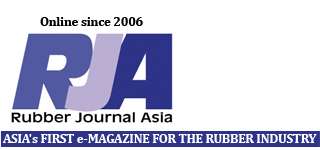 IN light of the growing demand for solution styrene-butadiene rubber (SSBR), Japanese firm JSR increased the capacity of its Yokkaichi plant from 25,000 to 60,000 tonnes/year last year. It also has a 30,000-tonne/year SSBR facility with Styron in Europe and with recent expansions, its capacity of SSBR is 90,000 tonnes/year.
IN light of the growing demand for solution styrene-butadiene rubber (SSBR), Japanese firm JSR increased the capacity of its Yokkaichi plant from 25,000 to 60,000 tonnes/year last year. It also has a 30,000-tonne/year SSBR facility with Styron in Europe and with recent expansions, its capacity of SSBR is 90,000 tonnes/year.
Nevertheless, the company plans to build a new plant in Thailand, producing 50,000 tonnes/year starting 2013 and 100,000 tonnes/year by 2015. SSBR is mainly used in the tyre tread, which is the only part of the tyre that comes into contact with the road’s surface and contributes to break performance (gripping power) and fuel efficiency (rolling resistance). Rolling resistance impacts 15% on fuel consumption, of which the tread has an impact of 50%. For the vehicle as a whole, the tread component has an impact of 7.5% on fuel consumption.
JSR says its rubber has been designed to reduce rolling resistance, suppressing the heat generated by
friction (energy loss), by 45% compared to conventional SSBR. This is made possible by making changes to
the ends of the rubber molecules to make it easier for them to form connections, without changing the properties.(PRA)
